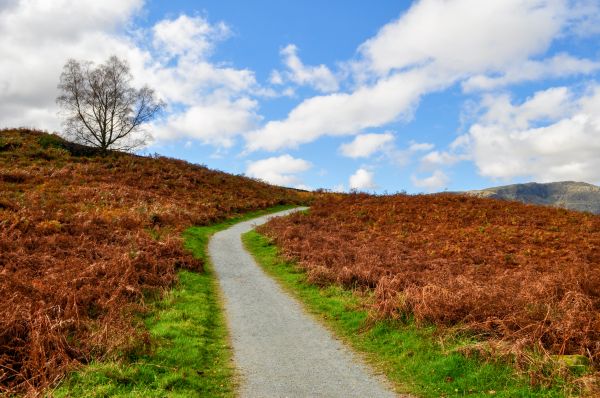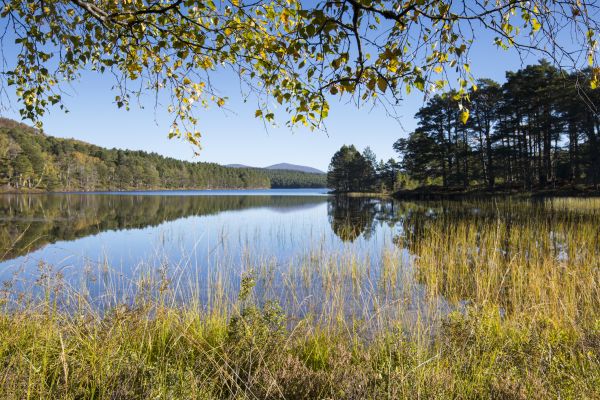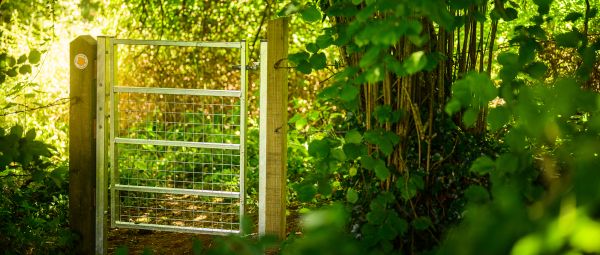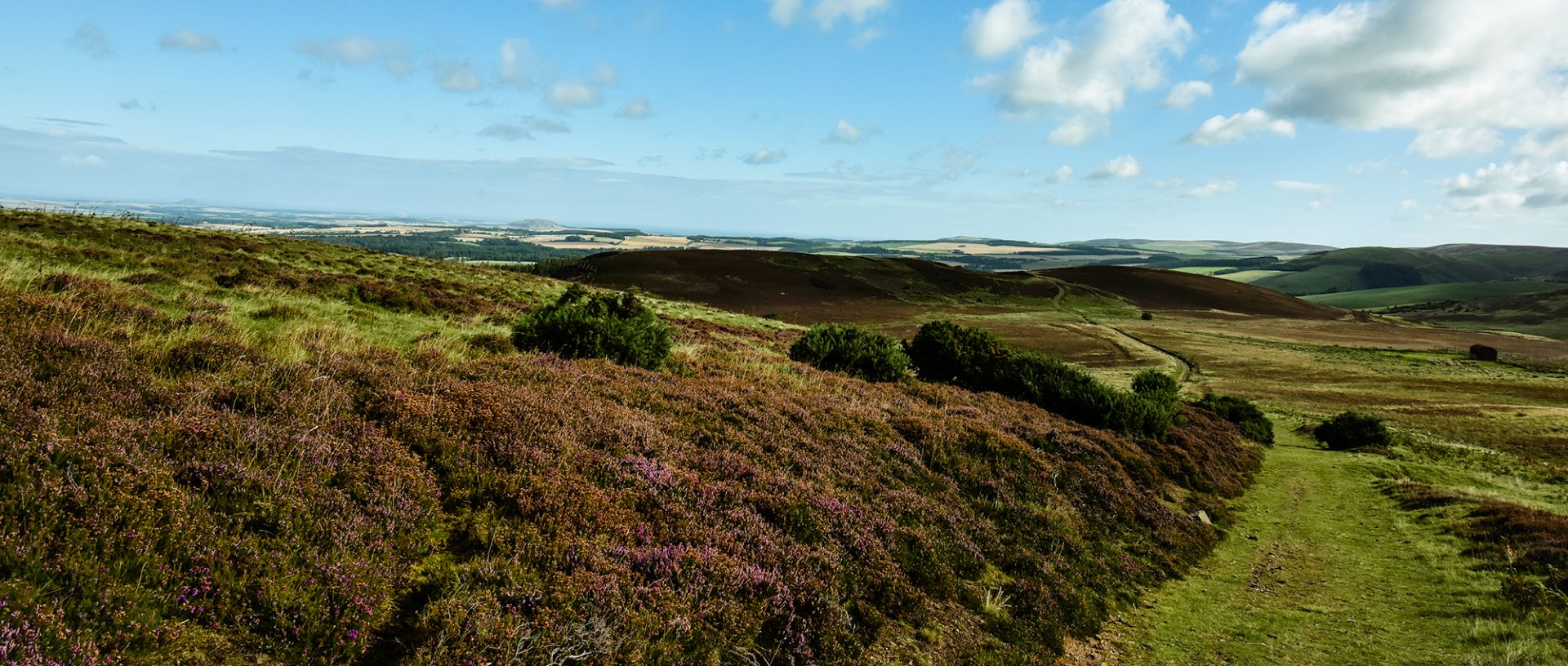10 great routes for wheelchair users
A fantastic selection of wheelchair-friendly walks

1. Tarka Trail, Devon - Best for… estuary views
Named after Henry Williamson’s timeless book about a Devonian otter, the Tarka Trail is a splendid traffic-free route. Incorporating disused railway lines, it offers 30 miles of easy wheeling for chairs and cycles between Braunton and Meeth. Enjoy the best of the flat early sections, heading west from the carpark and café at Fremington Quay. The smooth 3.5-mile stretch to Instow passes bird-bustling nature reserves lining the south bank of the River Taw. Spot ducks, waders and perhaps even spoonbills. At pretty Instow, roll towards the dunes for views across the Torridge estuary to Appledore. You’ll find cafés, pubs and accessible toilets here, too.
2. Dunstable Downs & Five Knolls, Beds - Best for… wildlife
This lofty ridge at the northern end of the Chiltern Hills affords magnificent views from its wide, all-weather track. From the National Trust Chilterns Gateway Centre just south of Dunstable, roll onto the path and turn north. You’’ll soon pas the turning for the ancient Icknield Way and a beacon lit for Queen Elizabeth’s 90th birthday. This route is particularly lovely in spring and summer when skylarks sing, grasshoppers chirp and rock-roses bloom. Watch for soaring red kites and remnants of a medieval rabbit warrens as you cruise to the Five Knolls. This cluster of prehistoric burial mounds dates from the Neolithic period. Complete a 1.9-mile out-and-back route at the Visitor Centre, where there’s a café and accessible toilet.
3. Loch Leven Heritage Trail, Perth & Kinross - Best for… lakeside birdlife
This wonderful National Nature Reserve is blessed with a largely flat, 13-mile heritage trail running around the whole loch. With carparks on the west, north and south shores, it’s easy to reach from multiple points. The RSPB visitor centre in the south has accessible toilets and a café, and there are accessible hides, too. Watch for courting great crested grebes in spring, and breeding ducks and fishing ospreys in summer. In autumn, thousands of ducks, swans and pink-footed geese arrive. From Kirkgate Carpark near Kinross, you can enjoy lovely views across to Lochleven Castle, perched on its lake island.
Loch Leven Heritage Trail route
4. Holkham, Norfolk - Best for… stately circuits
The Earls of Leicester have called Holkham home for some 400 years, building the magnificent Neo-Palladian hall in the mid-18th century. Around this grand house spreads parkland spanning over 1200ha near the glorious north Norfolk coast. South of the hall, a well-surfaced trail follows the Avenue to the Obelisk, looming over its namesake wood. Complete a 3.5-mile loop via the Great Barn back to the woodland play area and carpark. Or continue north over grassier trails around the lake, spotting fallow deer grazing the parkland. Admire the lofty column of the Thomas Coke Monument and St Withburga’s Church. Then complete a 5.5-mile figure-eight route, stopping to visit the Walled Garden, where you can borrow a mobility scooter. There’s accessible parking and toilets here.
5. Sutton Bank, North Yorkshire - Best for… the ‘finest view in England’
The Cleveland Way is one of Britain’s great National Trails, winding 109 miles through the North York Moors. And the section at Sutton Bank is both accessible and magnificent. Indeed, vet and writer James Herriot is said to have proclaimed the view from here “the finest in England”. The sections of path north and south of the visitor centre are well surfaced. And if you’re able to tackle some steeper sections that can be muddy after rain, try a wonderful 5.5-mile circuit. Either way, you can admire the vistas across the Vale of Mowbray to the Yorkshire Dales. There are accessible toilets and a café at the visitor centre.
6. Cliveden, Berkshire - Best for… woodland wanders
The wealthy Astor family’s mansion at Cliveden hosted royals including George VI and Elizabeth II. But perhaps even more wonderful than the house itself are the extensive gardens and grounds, with beautiful views across the Thames. From the Woodland carpark, enjoy a 2-mile outing first north through the woods along the riverside escarpment overlooking Cliveden Deep. Watch for curious wooden sculptures of snails and other animals. Turn at the statue of the 2nd Duke of Sutherland, who built the house in 1851. Return along the lush avenue known as Green Drive. Mostly well-surfaced, some parts of the trail are grassy and can be muddy; prepare for short slopes.
7. Millennium Coastal Park, Carmarthenshire - Best for… regeneration
The formerly busy industrial area along the Loughor Estuary around Llanelli has been transformed into a series of parks and recreation areas. The wide, well-surfaced 13-mile Millennium Coastal Path is popular with walkers, cyclists and wheelchair users alike. The 4-mile stretch west of St Elli’s Bay passes intriguing sculptures and ponds busy with ducks and other birds. Just after the attractive harbour of Burry Port you’ll reach the sweeping dunes and sands of Pembrey Country Park. Here you’ll find a visitor centre with accessible toilets and a café. In the other direction, the WWT Wetland Centre is a great place to learn about the birds that throng the estuary.
8. Tarn Hows, Cumbria - Best for… Lake District loveliness
Cumbria’s spectacular fells and meres are among England’s most gorgeous landscapes. Also the hilliest. Fortunately, the National Trust has created a wonderful, well-made and only gently undulating 1.7-mile trail around Tarn Hows. This idyllic little lake was created in the mid-19th century within a larger plan to create an ornamental landscape. Today, the path winds through larch and spruce forest, providing wonderful views of loftier hills beyond. Watch for distinctive belted Galloway cattle, part of a conservation grazing scheme. There’s an accessible toilet at the carpark, and a Tramper is available to use on the circuit track.

9. Bushy Park, London/Surrey - Best for… a capital escape through time
London’s second-largest royal park spans over 400ha and is home to famous herds of red and fallow deer. This wonderful expanse was formerly owned by Henry VIII. Today it’s laced with excellent trails providing easy wheelchair roaming, plus buckets of history and natural beauty. It’s easy to reach by public transport, too, being close to Teddington railway station. Enjoy a taste of everything on a 1.7-mile circuit from Teddington Gate, passing memorials to US troops stationed here during the Second World War. Explore a wood planted for the millennium, and visit Leg-of-Mutton Pond, created by Oliver Cromwell in the 17th century. Return along Chestnut Avenue, with views of Hampton Court Palace just to the south.

10. Helix Park & Kelpies, Falkirk - Best for… spectacular sculptures
The mouth of the Forth and Clyde Canal is guarded by a pair of astonishing, 30m-high steel horse heads. These Kelpies represent shape-shifting spirits of Scottish legend, which pay tribute to the nation’s hard-working horses. From these amazing sculptures by Andy Scott you can wheel alongside the canal to the equally groundbreaking, boat-lifting Falkirk Wheel. A shorter route heads through community woodlands and south to Helix Park, a landscaped green space with excellent wheelchair-friendly paths. Combine Kelpies and Helix on a rewarding 3.3-mile amble, passing ponds, wildlife areas, more sculptures and children’s play areas. There are Blue Badge parking spots, accessible toilets and cafés.
All images © Getty

How to identify accessible walks
Use the tips in our short practical guide to help you find walks suitable for people with limited mobility.

10 gentle walks for all abilities
Enjoy easy short strolls that are suitable for all abilities, with wonderful wildlife, views and history.

Dealing with problems on public paths
The Ramblers guide to reporting problems on public rights of way in England and Wales. Who is responsible, how to contact them and what to expect.

Campaign With Us
We campaign to remove barriers to walking and we step up to protect the places we love to wander.